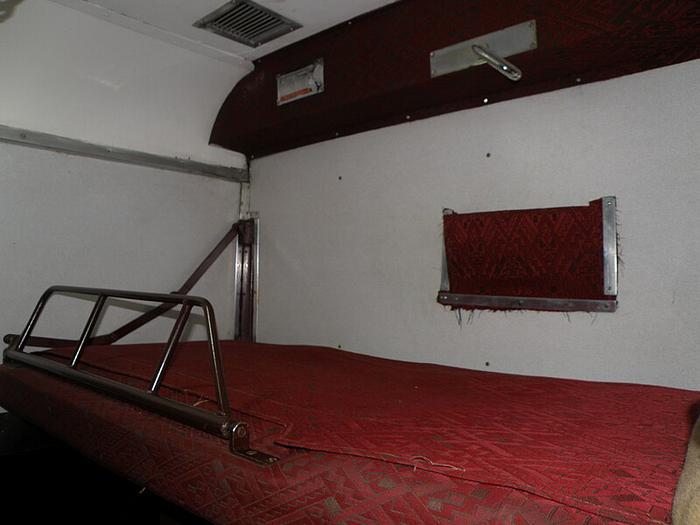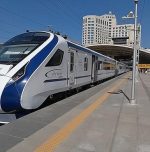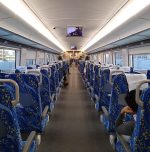Understanding travel classes in Indian Railways

Travelling by train is an integral part of life in India, but understanding the different ticket classes can be confusing. Each class offers unique features suitable for various needs and budgets.
Here’s a guide to help you make an informed choice when booking your next train ticket.
Unreserved General Class (UR)
Unreserved General Class is the most economical option, ideal for spontaneous or budget travel. However, these coaches are often overcrowded and lack comfort.
Total Berths: Unreserved seating for 70-90 passengers per coach.
- Chart Preparation: Not applicable.
- Food: Available for purchase.
- Pets: Generally, not allowed.
- Washrooms: Standard facilities, no showers.
Second Seating (2S)
Second Seating is suitable for daytime travel, offering cushioned bench-style seats. It is available in most intercity and Jan Shatabdi trains.
- Seating: Reserved and unreserved options.
Cooling: Fans.
Sleeper Class (SL)
Sleeper Class provides basic sleeping accommodations and is the most common choice for long-distance travel. However, it can be noisy and crowded.
- Total Berths: 72-80 per coach.
- Layout: 8 berths per compartment, with open-plan compartments.
- Washrooms: Standard, with both Indian and Western-style toilets.
AC Chair Car (CC)
AC Chair Car is ideal for comfortable day travel on short journeys, featuring a 3-by-2 seating arrangement and air conditioning.
- Features: Overhead luggage space, foldable tables.
Third AC Economy (3E)
Third AC Economy offers air-conditioned travel at a lower cost, with a slightly more cramped seating arrangement than regular Third AC.
- Total Berths: 72-81 per coach.
- Features: Bedrolls are available for an extra charge.
Third AC (3A)
Third AC is a popular choice for affordable and comfortable long-distance travel.
- Features: 8 berths per compartment, general lighting (i.e. it lacks individual reading lights).
Second AC (2A)
Second AC offers more privacy with curtains and individual reading lights. It features a double-decker bed configuration and more space.
- Total Berths: 48-54.
- Privacy: Curtains and reading lamps.
First AC (1A)
First AC provides the highest comfort with lockable compartments, spacious berths, and high hygiene standards. It is the most expensive class.
- Features: Lockable doors, menu-based food service.
First Class (FC)
First Class, although non-AC, is less common now due to the popularity of AC classes.
- Features: private cabins with lockable doors, reading lamps.
AC Executive Class (EC)
AC Executive Class is similar to business class in air travel, offering spacious 2-by-2 seating arrangements without sleeping berths.
- Features: Greater leg space, catering fees apply.
Executive Anubhuti (EA)
Executive Anubhuti offers enhanced facilities, similar to aeroplane travel, with reclinable seats and modern amenities.
- Features: LCD screens, automatic doors, washroom indicators.
Understanding these travel classes will help you choose the best option for your journey, ensuring comfort and convenience based on your needs and budget.
Image Credit: Prateek Karandikar, CC BY-SA 4.0, via Wikimedia Commons
You may also like
Image Reference:
https://commons.wikimedia.org/wiki/File:Indian_Railways,_upper_berth_in_AC_first_class_4-berth_cabin.JPG
Recent Posts
- From frozen shots to fast funding: Zenma Coffee’s breakthroughZenma officially launched in November 2023. Soon, its frozen espresso shots appeared on Blinkit and Zepto.
- India prepares for a major tax reset from April 2026According to officials, the focus is on reducing notices, speeding up refunds, and cutting paperwork.
- Bihar youth builds electric jeep that runs 100 km on a single chargeMurshid previously worked at different mechanic shops after completing his education.
- From frozen shots to fast funding: Zenma Coffee’s breakthrough
What’s new at WeRIndia.com
News from 700+ sources
-
Sensex slips 800 points and Nifty sees a decisive breakdown. Can investors ignore Trump to buy the dip?
-
Sarfaraz Khan Slams Fastest List A Half-century By An Indian
-
Sri Lanka Appoints Vikram Rathour As Batting Coach Ahead Of T20 WC 2026
-
Gujarat to host SEAs 2-day Global Castor Conference from February 27
-
Coal scam case: ED alleges Mamata Banerjee removed evidence during I-PAC raids in Kolkata
-
Who is Aldrich Ames a CIA insider who became a soviet spy, led luxurious life with secret payments and
-
WeRIndia – A News Aggregator
Visit werindia.com for all types of National | Business | World | Politics | Entertainment | Health related news and much more..










Leave a Reply